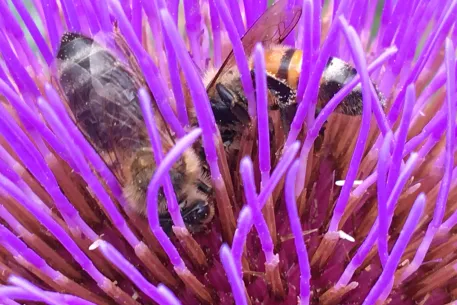Sustainable development
Label BioSuisse: Le Jardin botanique est certifié bio
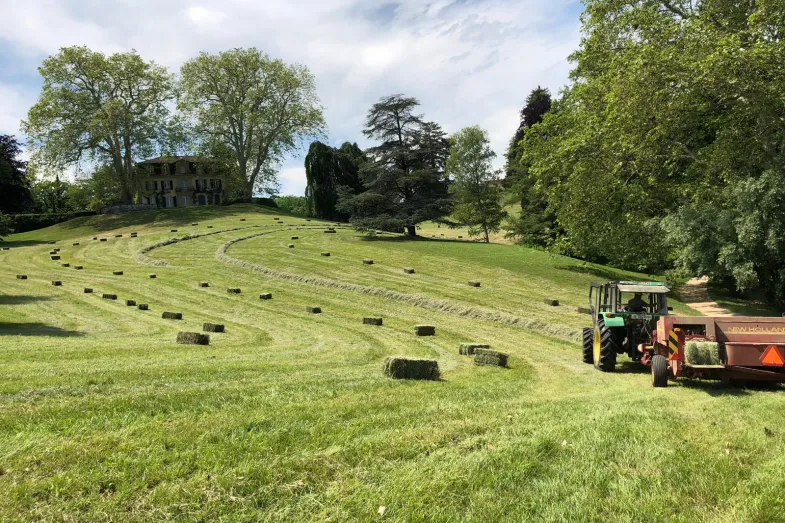
The Bio Suisse label: The Botanical Garden is certified organic
Following a two-year reconversion period, the Botanical Garden was certified organic on 1 January 2017. It took several years of studying and searching for solutions to realise this ambitious project, which is unique in French-speaking Switzerland. Today, visitors enjoy a garden that is maintained to meet Bio Suisse specifications, a major first for a public body!
What is a 100% organic garden?
Bio Suisse has been the umbrella organisation for organic farmers in this country since 1981. It owns the Bourgeon label, the one most widely recognised by Swiss consumers. There are around 6,000 farmers and growers who follow the Bio Suisse guidelines, which are among the most demanding standards in the world for organic agriculture. The Botanical Garden of Geneva qualified for this quality label after a period of what is called “reconversion” that lasted two years and a detailed inspection by the label’s experts.
What does organic mean?
To qualify for and obtain the Bio Suisse label, you have to comply with its requirements as set down in the specifications:
In concrete terms, that means working differently, not using agrochemicals and preferring instead natural fertilisers, treatments and substrates, in other words cultivating with respect for the biodiversity of the environment.
Cultivating a garden organically also means accepting that your work will be inspected by an external company and that you will be judged. This is, however, the essential tool that makes it possible to certify the quality of the 6,000 organic growers in Switzerland! The inspection takes place each year between March and September.
A triple objective: ecology – health– evolution
This project meets several objectives:
The first and most important, of course, is the ecological issue. By completely and rigorously renouncing all man-made chemicals used to maintain green spaces we show all the more respect for the ecosystem around us. Working organically means respecting the cycles of life. It means acknowledging that our resources are finite and acting accordingly on our own scale.
The second issue is that of health. Complying with organic requirements clearly improves the working conditions of the gardeners. Environmentally-friendly practices are much more favourable and supportive for human health that the conventional methods used previously.
The third objective is to bring about an evolution in the gardening profession. The Bio Suisse specifications are aimed mainly at agriculture, i.e. producing animal and vegetable foodstuffs. What the Conservatory and Botanical Garden of Geneva have done is pioneering in the sense that it applies to plant collections and public green spaces.
De la culture traditionnelle à la gestion différenciée
Histoire d’une reconversion
L’énergie verte des bâtiments

The green energy in our buildings
100% renewable energies
Since 2013 the extensive installations of the Conservatory and Botanical Garden of Geneva (CJBG) have drawn all their energy from wood (75%), solar (4%) and biogas (20%), supported by a smart heating system for the greenhouses and buildings.
Buildings
The new buildings, like the extension to the herbaria and the public reception area in the Botanic Shop (2011), meet very strict energy performance standards with double flow ventilation systems, reduced water consumption and advanced electrical equipment… The old buildings are gradually being renovated with the same aim of saving energy: the library (2014-15) and the adjacent offices (2013), the villa Le Chêne (2016) and the former conservatory at La Console, by the lake (2013-14). La Console has its own pellet-fired boiler and is not linked to the district heating network.
Heating
To replace our old system, which used to consume 250,000 litres of fuel oil, two wood-chip burners and a gas-fired back-up boiler were fitted 2010. Some of the wood comes from maintaining the parks and forests of the City of Geneva (the Parks, Gardens and Environment Department and the CJBG); the rest from privately owned forests in Geneva. Use of the boiler is optimised, thanks to a sophisticated, computer-controlled heat management system for the greenhouses that integrates the weather forecast. The gas-fired boiler is only used when it is extremely cold. The City of Geneva, of which the CJBG is a part, was the first customer to take out a 100% biogas contract with Services Industriels de Genève in 2013.
Solar panels for hot water in the bathrooms
Since 2010, 180m2 of vacuum thermal panels have provided hot water to the bathrooms in the Gardeners’ House and partly feed the heating system.
Electricity: a photoelectric centre
On the roof of the Gardeners’ House is a second central facility, photoelectric this time, covering 200m2 and producing around 25,000kwh annually; these are fed into the grid by means of the SIG-Vitale Vert offering.
Water recovery
Rain water
Underneath the greenhouse, two rainwater cisterns with a capacity of 1,000m3 allow us to irrigate our greenhouse plants with water that contains no calcium.
Lake water
The CJBG is also connected to the Geneva-Lake-Nations (GLN) heating system. The principle behind the GLN is to pipe lake water straight to companies and international organisations in the Nations district for cooling purposes by providing a network for transporting and distributing water from deep in the lake. The system can also be used to heat new buildings by installing high-performance heat pumps. The CJBG uses the circulating water going back to the lake to irrigate the plants.
La charte des jardins
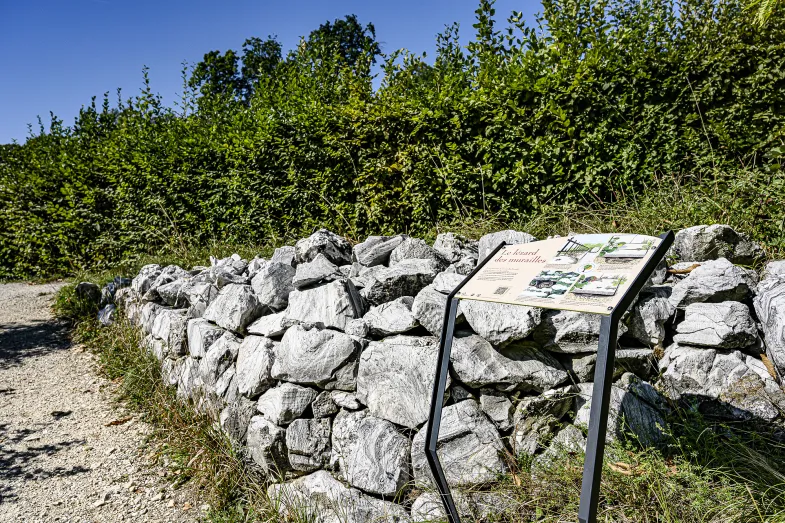
The Garden Charter
The Botanical Gardens are evolving. Originally intended to display “foreign” plants, they were a way of helping the public to become familiar with species from elsewhere. Their wealth seemed to lie in the emphasis placed on the ability to bring home and cultivate the exotic. Nowadays we have fundamentally changed the way we view nature. The destruction of natural habitats, falling biodiversity all over the world and the transformation of ecosystems have transformed the way institutions such as our own work.
A more natural garden!
For some years now we at the CJBG have been engaged in changing our cultivation techniques to become more respectful of the environment. The current context marks a new stage, with a preference for nature in the city. The aim is to limit as far as possible the “artificial” aspect of the botanical garden and no longer see it as just a place for exhibiting plants, but more as an ecosystem in its own right, with its own cycles and needs.
Acting for biodiversity
The Nature in the City programme run by the State of Geneva offers a whole series of things to do to promote biodiversity in the urban environment. It is against this background and in collaboration with the departments of the State that the CJBG has put various new arrangements in place to illustrate “good practice” in the garden.
A walk that is both cheerful and educational
The Garden Charter walk, in the Terres de Pregny is a way of giving spaces over to nature with only minor adjustments. It is also a way of highlighting aspects of nature that are right in the midst of the general public, so we can all do our bit to promote biodiversity wherever we encounter it… The CJBG provides a cheerful walk with 10 illustrated signs to introduce some of the hidden stars of our gardens and suggest simple ideas for providing conditions that suit the lifecycles of animals and wild plants all year round.
Providing a welcome for players who are discreet but effective
It is in this same spirit that the Botanical Garden set up an insect hotel facing the flower meadows in the rockeries. The advantage of this is that it makes it possible to observe a whole series of insects who use the structures as a nesting place. A way of showing the public that not all insects are harmful - in fact quite the opposite! Educational, useful, entertaining, it showcases the little known truth about the incredible diversity of bees that inhabit our meadows. The hotel is constructed so as to offer hospitality to a whole series of other insects in addition to bees. These discreet but valuable collaborators will help the gardeners combat pests both naturally and effectively!
Fostering biodiversity
In order to be more natural and allow the immense potential of the biodiversity around us to settle in, the garden of tomorrow has to be less clean, less well manicured, less maintained. This is a change we have to accept and which we wish to continue to operate in some parts of the Botanical Garden.
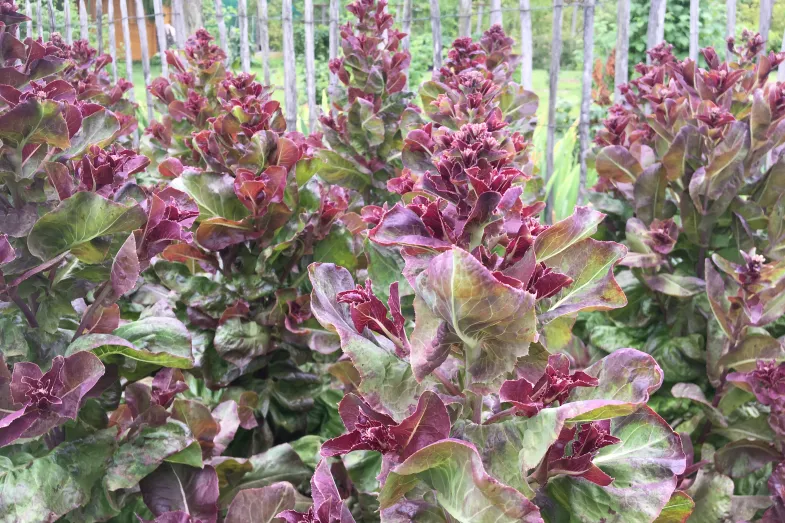
The cantonal energy and environment departments are backing this Garden Charter.
Programme of Action for the Climate and the Environment (PACE)
Our actions
The Conservatory and Botanic Garden of Geneva have chosen to take specific measures aimed at cutting our carbon footprint and greenhouse gas emissions. Common sense and a desire to take action for the climate are leading us to select options that are “green”, local and sustainable at all levels of the institution, not least by implementing the 3R policy of reducing, reusing and recycling.
In our educational activities, the staff of the CJBG seek to raise public awareness of the importance of preserving biodiversity.
The BGCI accreditation awarded in 2019 was in recognition of our efforts to save species.
Les actions des CJBG s'inscrivent dans la politique du Département de la culture et de la transition numérique de la ville de Genève
Programme d’Action pour le Climat et l’Environnement (PACE)
Filmer la nature pour aider à la comprendre et à en prendre soin
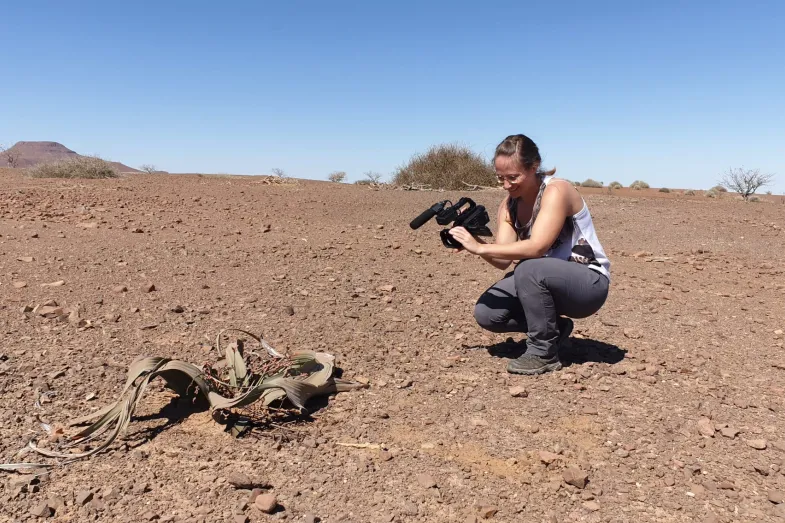
Filming nature as a way of helping people understand and care for it
The CJBG coproduces the series “Genève Grandeur Nature” in a media partnership with Léman Bleu
On the trail of the palm trees of Namibia
With Fred Stauffer, Chief Curator of the Geneva Herbaria, CJBG
Patrick Griffith, Executive Director of the Montgomery Botanical Center, Miami
Leevi Nanyeni, National Botanic Garden Curator, Windhoek, Namibia
Taste and Nature
With Aurélien Guala, a dedicated student of cooking and botany, and Louis Nusbaumer, Curator, CJBG
“A mobile kitchen, a fan of cooking and a gourmet biologist. The ingredients come along on a nature ramble, with an added bonus for the taste buds. Aurélien’s cooking and Louis’s stories about botany are best enjoyed without moderation. “
Pools, staging posts for biodiversity
With Jacques Thiébaud, Amphibians Correspondent KARCH-GE
Frédéric Sandoz, Scientific Collaborator, CJBG
Sophie de Chambrier, President, KARCH-GE
Manon Crausaz, active member, Project Manager, KARCH-GE
Alexandre Lachavanne, pond owner, Confignon
Stefano Rossi, pond owner, Onex
Thomas Gil, resident of Anières, volunteer at KARCH-GE
Claudine Hentsch, pools owner, Anières
“Pools, ponds and marshes, all those wet areas that seem so uninviting at first glance, are crucial reservoirs of biodiversity. Amphibians, along with many species of insects and plants, are closely linked to these biotopes. Genève Grandeur Nature dives into the waters of the local wetlands to meet their delightful inhabitants. “
Along the Laire
With Arielle Cordonier, Biologist, Cantonal Water Office
Florian Mombrial, Scientific Assistant, CJBG
Vincent Jaggi, Programme Manager for Natural Environments and Protected Sites, State of Geneva
Natacha à Porta, Project Manager, Cantonal Water Office
“The Laire is a natural river that winds its way around the canton before joining the Rhône at Chancy. Differing by only one letter, it is often confused with the Aire, the former canal that has been rewilded near Lully.
For the canton, the valley of the Laire is a delight. The diversity of its environments give it a unique and precious wealth of flora and fauna. Genève Grandeur Nature takes you along the Laire to discover its treasures on land and in the water. “
